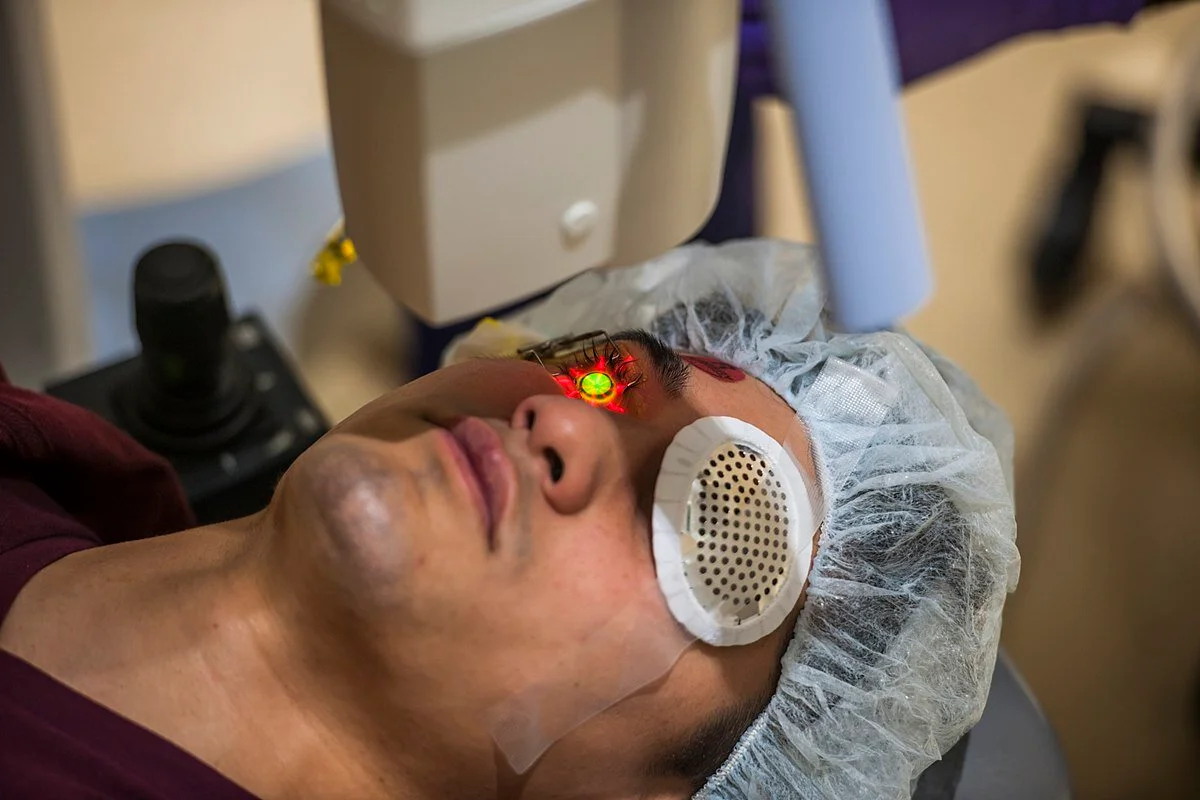
Corneal cross-linking (CXL) is a medical procedure used to treat keratoconus, an eye condition that hinders clear vision. In this case, the treatment approach varies depending on the severity of the condition.
If a patient has a non-advanced case of keratoconus, an ophthalmologist may only prescribe corrective lenses. However, if the cornea is at risk of deterioration, the doctor may recommend a corneal cross-linking procedure.
What is this procedure? Can all keratoconus patients undergo it, or are there specific criteria? Let’s find out more.
What is Corneal Cross-Linking (CXL)?
Corneal cross-linking is a surgical procedure primarily performed to treat keratoconus. It aims to prevent the deterioration of the affected cornea and protect the patient from vision loss.
Some patients with weakened corneas, such as those with corneal ulcers or astigmatism, may also need this surgical procedure.
Who Should Undergo Corneal Cross-Linking?
Ophthalmologists may recommend corneal cross-linking for keratoconus patients who exhibit the following symptoms:
- Blurred and hazy vision.
- Sensitivity to bright light sources and difficulty driving at night.
- Frequent changes in eyeglass prescription.
- Sudden deterioration in vision.
These symptoms indicate that the corneal condition is deteriorating and worsening, signaling the urgent need to address the problem with corneal cross-linking before it is too late.
At what Age can you Undergoing Corneal Cross-Linking?
Age plays a crucial role in determining suitability for corneal cross-linking. This procedure is generally recommended for patients who are at least 20 years old, as the cornea needs to be fully developed to undergo the treatment.
However, an ophthalmologist may allow a patient younger than this age to undergo this procedure if there is a rapid progression of keratoconus that could impact the patient’s quality of life in the future.
Important Procedures Before Corneal Cross-Linking
Before undergoing corneal cross-linking for keratoconus, individuals should complete several preparatory procedures. These include:
- Undergoing Medical Examinations
Certain medical examinations are essential for the doctor to assess the condition of the patient’s eye before the surgery. These examinations include:
- Slit-Lamp Examination: This test involves directing a beam of light onto the eye’s surface and using a microscope to view the eye’s fine details, assessing the condition of the cornea, and identifying any other eye health issues the patient might have.
- Corneal Topography: This examination creates a detailed map of the cornea’s surface to measure its thickness and detect any irregularities.
- Adhering to Pre-Procedure Instructions
In addition to medical examinations, patients with keratoconus should follow these guidelines:
- Avoid using cosmetics, perfumes, or shaving creams.
- Bring a family member to assist you on your way home.
Patients are allowed to have a light meal or drink some fluids before this surgery, as the anesthesia used will be local rather than general.
How Corneal Cross-Linking is Performed?
The corneal cross-linking procedure for keratoconus is conducted as follows:
- Anesthesia
Before starting (CXL) procedure, the eye must be anesthetized. The doctor applies anesthetic drops to the patient’s eye to prevent any pain during the procedure.
- Application of Riboflavin Drops
After anesthesia, the first step involves applying riboflavin (vitamin B2) drops to the eye. This step takes about half an hour.
- Exposure to Ultraviolet Light
Next, the doctor directs an ultraviolet (UV) light beam onto the eye. This creates new bonds between collagen fibers, stabilizing the cornea and preventing further protrusion over time (keratoconus progression).
How Long Does Corneal Cross-Linking with Ultraviolet Light Take?
The duration of the corneal cross-linking procedure using ultraviolet light ranges from approximately one to one and a half hours, depending on the condition of the patient’s eye. After completing the surgery, the patient is allowed to leave the medical center and return home.
Important Tips for Recovery After Corneal Cross-Linking
Before heading home, the ophthalmologist recommends that the patient follow some essential instructions to manage recovery after the surgery. These tips include:
- Use the prescribed eye drops at the scheduled times.
- Avoid going out during midday to prevent exposure to direct sunlight. If it is necessary, wear sunglasses.
- Avoid rubbing your eyes after corneal cross-linking with ultraviolet light.
- Attend follow-up appointments with your ophthalmologist at the agreed-upon time.
What Type of Eye Drops Does the Doctor Recommend After CXL Procedure?
The eye drops recommended by the doctor help protect the eye from complications that could delay the final outcome of the surgery. These drops include:
- Antibiotic Drops: Used for about a week after the surgery to protect the eye from bacterial infections.
Artificial Tears: These drops help lubricate the eye and protect it from dryness.
